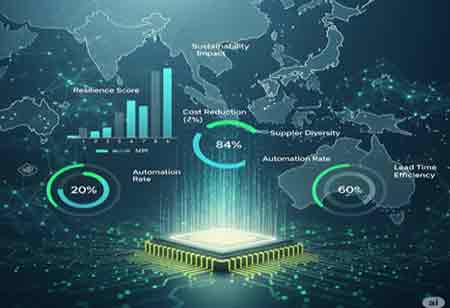THANK YOU FOR SUBSCRIBING
Healthcare Transformation with 5G Network
It demonstrates that 5G will be crucial in transforming the healthcare sector, giving transmission efficiency in an ecosystem of alerts and feedback, mobility and low latency. For example, in remote health observation, wearable gadgets

By
Apac CIOOutlook | Tuesday, November 25, 2025
Stay ahead of the industry with exclusive feature stories on the top companies, expert insights and the latest news delivered straight to your inbox. Subscribe today.
According to Ericsson's latest consumer lab report, the potential transformation of the 5G network is becoming imperative in the healthcare sector as patients are beginning to demand care that is connected through applications, wearables, and telehealth.
Titled ‘From Healthcare to Homecare,' the report uncovers the impact that 5G connectivity would have on the fate of healthcare and its transformation across over precaution, schedule, and post-operative care.
It demonstrates that 5G will be crucial in transforming the healthcare sector, giving transmission efficiency in an ecosystem of alerts and feedback, mobility and low latency. For example, in remote health observation, wearable gadgets –, for example, heart monitors and glucose screens, require high recurrence updates of the central data repository, precisely at low rates.
Specialists say that current networks can't give that needed quality of support while associating an expansive number of such devices, and they have a belief that 5G can address these challenges.
Studies have shown that patients or consumers are always concerned about the dependability the devices tracking their health — which could incorporate unwavering quality of the network they're on. Along these lines, telecom operators could empower medical devices that directly connect to the internet associate rather than to depending on a patient's cell phone.
Likewise, 5G is additionally anticipated to enhance connectivity. For example, 35 percent of cross-industry decision makers are looking forward to the 5G network to provide better connectivity and sub-1ms latency connections, the reason being to enable haptic feedback to support surgeons' capacities to do robotic surgery.
The specimen isn't illustrative of the all-inclusive population; however, Ericsson predicts these early adopters could make way for the healthcare trends in the years to come. The second survey included 900 decision makers of the hospital. The outcomes were augmented with patient and supplier focus groups held in the US and UK.





